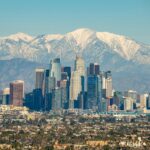In recent years, the emergence of the ai painter has sparked a fascinating debate within the art community and beyond: can machines produce genuine artwork? This question challenges one’s traditional understanding of creativity and artistry, pushing one to reconsider the role of technology in the creative process. This article will explore various aspects of this topic, examining the capabilities of AI in art and exploring what it means for the future of artistic expression.
The Evolution of AI in Art
The journey of AI in the art world has been nothing short of revolutionary. Initially, these technologies were simple tools designed to assist artists with basic tasks. However, as technology advanced, so did the capabilities of AI systems. Today, they can create complex and detailed artworks, learning from the styles and techniques of human artists to produce creations that are often indistinguishable from those made by human hands. This evolution raises intriguing questions about whether creativity is exclusive to humans.
Defining Art and Creativity
At the heart of the debate about machines and genuine artwork lies the challenge of defining what art is and what it means to be creative. Traditionally, art is seen as an expression of human emotion, thought, and experience. It is deeply personal and often reflects the artist’s perspective on the world. In this context, creativity is the ability to produce something new and valuable, a trait long considered uniquely human.
The Collaboration between Humans and Machine
One of the most exciting aspects of AI in art is the potential for collaboration between humans and machines. Instead of viewing AI as a replacement for human artists, many now see it as a partner in the creative process. This partnership allows for the exploration of new ideas and the pushing of artistic boundaries in previously unimaginable ways.
This collaborative approach can enrich art-making, offering artists new tools and perspectives. It also introduces unpredictability and novelty into the artwork, as the AI brings its own ‘interpretations’ and ‘ideas’ to the table, guided by algorithms and data analysis.
The Impact on the Art World
The rise of AI-generated art has significant implications for the art world. It challenges traditional notions of authorship and originality, prompting discussions about the value of art and what it means to be an artist. These technologies also democratize art creation, making it more accessible to those without formal training or artistic skills.
Furthermore, AI-generated art is opening up new avenues for exploration in digital and interactive art forms. It’s creating new spaces for artists to experiment and for audiences to engage with art innovatively.
Looking to the Future
As one looks to the future, it’s clear that AI will continue to play a significant role in the art world. The potential for machines to produce genuine artwork is hypothetical, but it is a reality unfolding before people. This does not diminish the value of human-created art; instead, it adds a new dimension to one’s understanding and appreciation of creativity.
Adobe Firefly states, “Like other types of artificial intelligence, generative AI relies on large datasets to produce the desired result, such as a digital painting, creating something totally new — all triggered by a single text prompt.”
The question of whether machines can produce genuine artwork is complex and multifaceted. As AI technologies evolve and integrate further into the creative process, they challenge one’s traditional notions of art and creativity. However, rather than detracting from human artistry, AI offers new tools and perspectives that enhance and expand the realm of possible expressions. The future of art, it seems, will be marked by a rich collaboration between human intuition and machine intelligence, ushering in a new era of artistic exploration.




